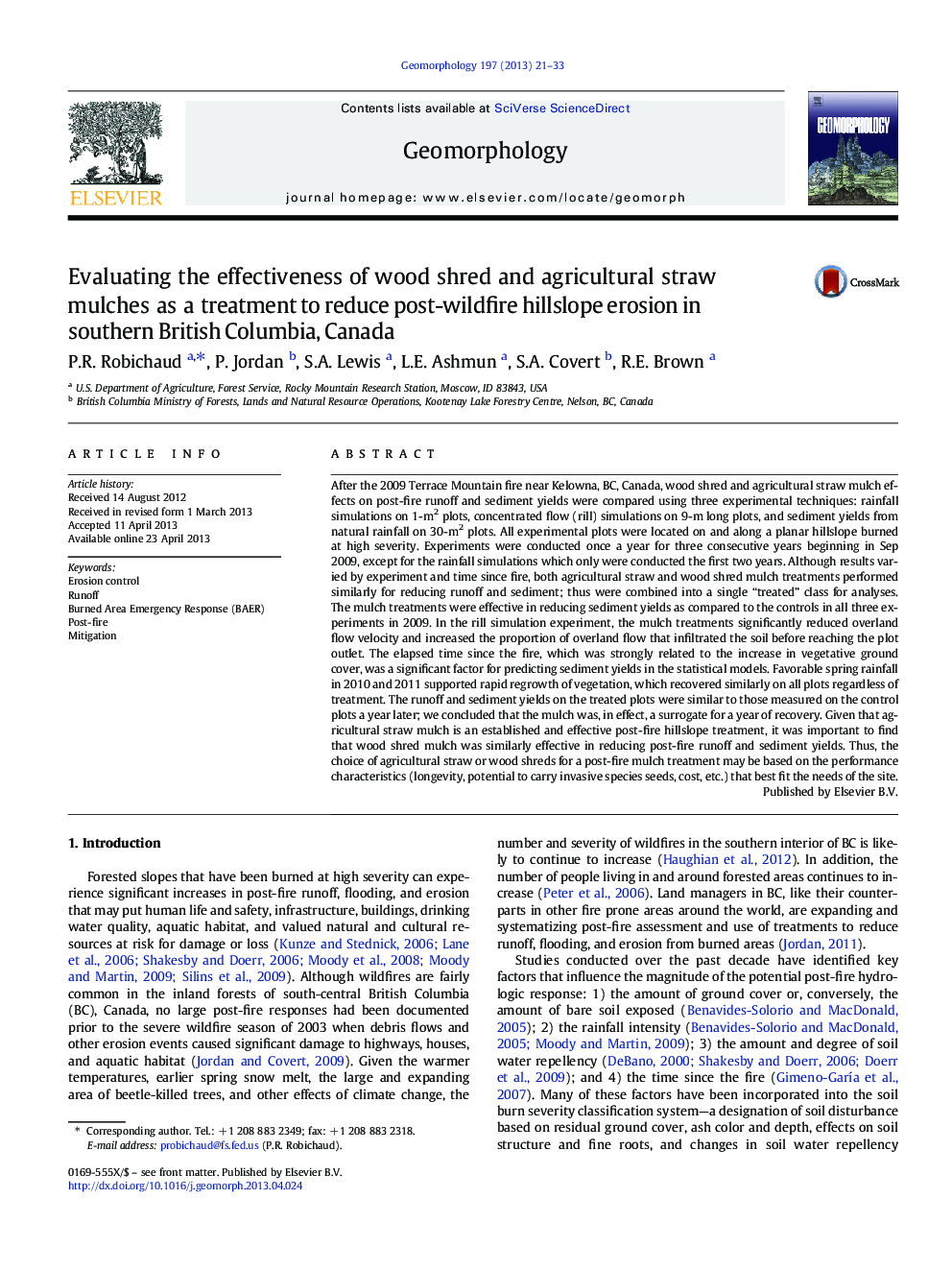| کد مقاله | کد نشریه | سال انتشار | مقاله انگلیسی | نسخه تمام متن |
|---|---|---|---|---|
| 4684760 | 1635452 | 2013 | 13 صفحه PDF | دانلود رایگان |
• Overland flow velocity was reduced by both wood shred and straw mulches.
• Sediment yields were similarly reduced by both wood shred and straw mulches.
• Time since fire and ground cover were significant factors for reducing erosion.
• The effect of mulch treatments was similar to a year of natural recovery.
After the 2009 Terrace Mountain fire near Kelowna, BC, Canada, wood shred and agricultural straw mulch effects on post-fire runoff and sediment yields were compared using three experimental techniques: rainfall simulations on 1-m2 plots, concentrated flow (rill) simulations on 9-m long plots, and sediment yields from natural rainfall on 30-m2 plots. All experimental plots were located on and along a planar hillslope burned at high severity. Experiments were conducted once a year for three consecutive years beginning in Sep 2009, except for the rainfall simulations which only were conducted the first two years. Although results varied by experiment and time since fire, both agricultural straw and wood shred mulch treatments performed similarly for reducing runoff and sediment; thus were combined into a single “treated” class for analyses. The mulch treatments were effective in reducing sediment yields as compared to the controls in all three experiments in 2009. In the rill simulation experiment, the mulch treatments significantly reduced overland flow velocity and increased the proportion of overland flow that infiltrated the soil before reaching the plot outlet. The elapsed time since the fire, which was strongly related to the increase in vegetative ground cover, was a significant factor for predicting sediment yields in the statistical models. Favorable spring rainfall in 2010 and 2011 supported rapid regrowth of vegetation, which recovered similarly on all plots regardless of treatment. The runoff and sediment yields on the treated plots were similar to those measured on the control plots a year later; we concluded that the mulch was, in effect, a surrogate for a year of recovery. Given that agricultural straw mulch is an established and effective post-fire hillslope treatment, it was important to find that wood shred mulch was similarly effective in reducing post-fire runoff and sediment yields. Thus, the choice of agricultural straw or wood shreds for a post-fire mulch treatment may be based on the performance characteristics (longevity, potential to carry invasive species seeds, cost, etc.) that best fit the needs of the site.
Journal: Geomorphology - Volume 197, 1 September 2013, Pages 21–33
